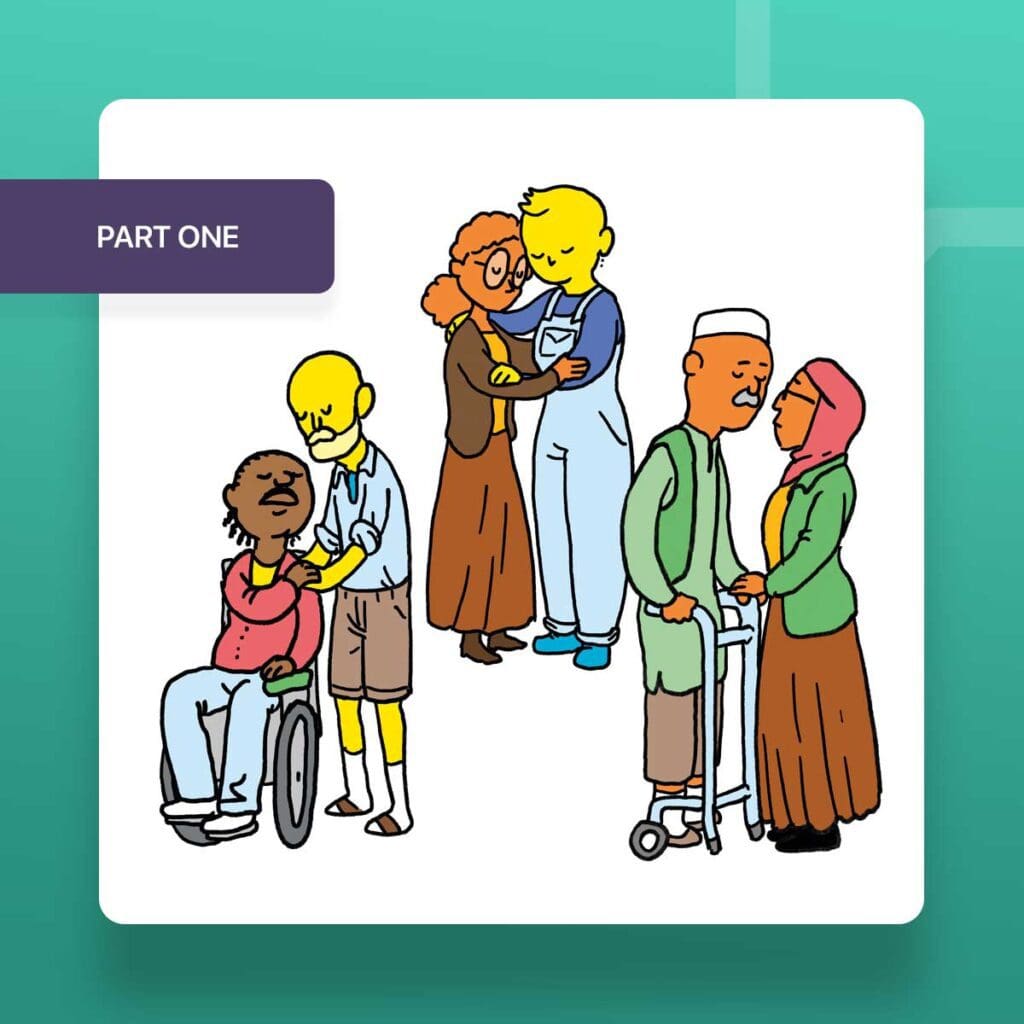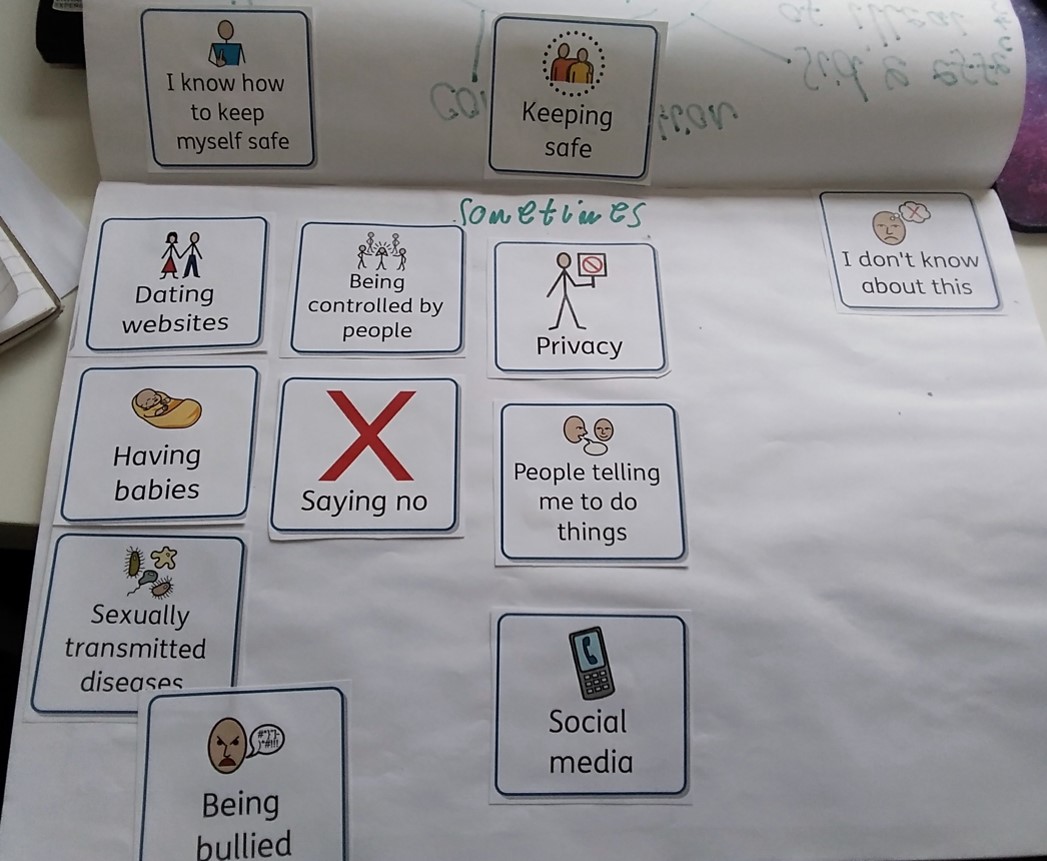
Sex and Relationships – Using Talking Mats to assess understanding of concepts and vocabulary that keep you safe (Part One)
Thanks to Kate Boot for her interesting blog describing her use of Talking Mats to assess and teach understanding of concepts and vocabulary that keep you safe. This is part one of a two-part blog, illustrating use of Talking Mats in a teaching context.
For several of my students (young adults aged 16-25 with special educational needs and disabilities) the focus of our therapy work is Relationships and Sex Education. They’ve worked with me through Mental Capacity Assessments, the result of which indicate that they require further education and support to build their capacity to make decisions in relation to sexual relations. All of the young adults I work with have significant speech, language and communication needs. As their Speech and Language Therapist it’s my duty to ensure that I work with them to enhance their understanding of the linguistic and pragmatic concepts which underpin their understanding of sex and relationships. As the Department for Education state in their latest RSE statutory guidance ‘to embrace the challenges of creating a happy and successful adult life, pupils need knowledge that will enable them to make informed decisions about their wellbeing, health and relationships and to build their self-efficacy’.
According to case law (D Borough Council v AB [2011] EWHC 101) there are key factors an individual must understand to have capacity to sexual relations. These are:
- The mechanics of the act;
- That there are health risks involved, particularly the acquisition of sexually transmitted and sexually transmissible infections;
- That sex between a man and a woman may result in the woman becoming pregnant.
This was added to recently in A Local Authority v JB [2020] EWCA Civ 735 where Lord Justice Baker included the fact that the other person must have the capacity to consent to the sexual activity and must in fact consent before and throughout the sexual activity.
My talking mat activities give me an opportunity to assess student’s self-awareness, an important consideration for mental capacity work when the law expects a person to be able to use knowledge and weigh it up to make a decision. Without the Talking mats structure, the responses are often ‘I don’t know’ or I’m offered a learned response, e.g., ‘to keep safe’.
The case study examples below demonstrate poor self-awareness, because when combined with further assessment to explore their understanding of key vocabulary and concepts it is evident that the young adults do not understand many of the terms used within these different sexual and social situations.
When working with talking mats it’s important to remember that you’re giving control to the ‘thinker’, it is their mat and therefore where or how they place visuals is their choice and part of the trust building exercise between the ‘thinker’ and ‘listener’.
Young Adult A
They expressed through their talking mat that they know how to keep themselves safe in various social and sexual situations, however upon further assessment, including follow on mats they did not understand many words and concepts used within this context, e.g., ‘hook-up’, ‘one night stand’, ‘morning after pill’ and were unable to offer examples of sexually transmitted diseases when offered visual choices on their mat.
Young Adult B
This young adult expressed that they understood how to keep themselves safe from sexually transmitted diseases and to manage their own and others privacy, however, upon further assessment it became clear that they did not understand the word ‘safe’. Understanding this concept is necessary for us to manage the majority of sexual and social interactions. Therefore, this talking mat helped to pave the way for our ongoing therapy work with the young adult.
Young Adult C

This talking mat facilitated a conversation with the young adult who explained how they sometimes find it difficult to keep themselves and others safe, specifically when they are struggling to manage their mental health. It acted as a starting point, allowed us to explore skills necessary to manage executive functions, e.g. planning, controlling our impulses and sequencing events. Again, it enabled us to consider what we would add into the therapy programme and how we would work with other key people involved in the young adult’s life to keep them and others safe.
Kate Boot is Clinical Lead, Specialist Speech and Language Therapist and Sensory Integration Practitioner at Phoenix Learning and Care. To share ideas or chat further about this work you can contact her via Twitter @SLTinSEND or LinkedIn www.linkedin.com/in/kate-boot-salt
References
Department for Education (2020) Relationships Education, Relationships and Sex Education (RSE) and Health Education [pg 8]
 Online training login
Online training login 






